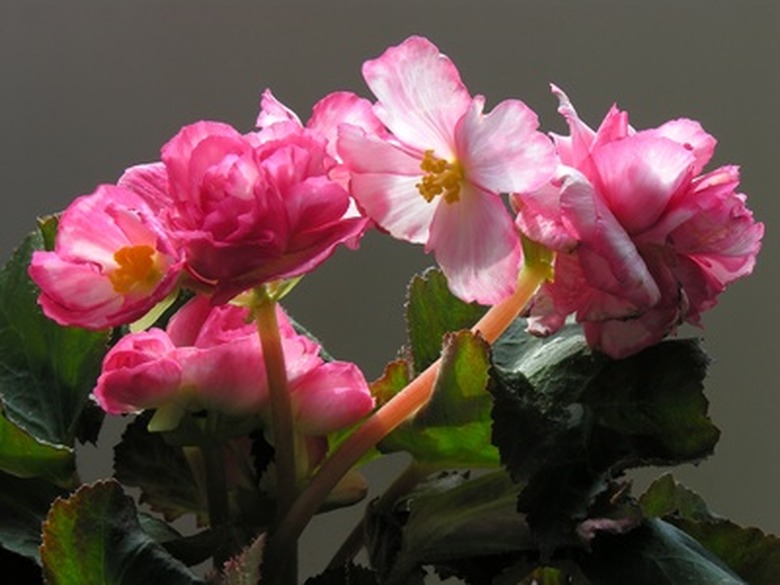How To Care For Wilting & Browning Begonias
The colorful hues of the begonia plant's flowers can add dashes of energy to your backyard or your potted garden. Though begonias are relatively hardy and low maintenance, they can sometimes wilt and turn brown. Give your begonias the proper care to resolve some of the common causes behind these health problems and to restore your begonia collection to lush and colorful health.
Step 1
Avoid watering the begonia plants' foliage. Begonias with constantly wet leaves are susceptible to bacterial leafspot, which causes wilting and leaf loss.
Step 2
Increase shade. Move the begonia plants or plant a vine on a trellis, set up a shade cloth, or grow taller vegetation near the plants. Most begonia types, except for some hybrids, prefer partial shade. Too much sunlight can lead to fading and wilting of the leaves, and continued excessive sunlight can cause the edges of the begonias' foliage to turn brown.
- The colorful hues of the begonia plant's flowers can add dashes of energy to your backyard or your potted garden.
- Too much sunlight can lead to fading and wilting of the leaves, and continued excessive sunlight can cause the edges of the begonias' foliage to turn brown.
Step 3
Decrease watering so the begonias' soil dries out between watering sessions. Begonia plants do not like very wet soil, and too much soil moisture can cause the plants' roots to rot.
Step 4
Fertilize the begonias to provide the nutrients needed for the plants to support healthy foliage production. Use a standard 3-1-2 or 2-1-2 fertilizer applied once a month, suggests the University of Florida. Apply according to the fertilizer label's guidelines, since potency varies by product.
Step 5
Change the begonia plant's depth in the soil. The plant's base should be level with the soil. If needed, add more soil or clear away the soil. Plants that are too high can't get adequate moisture and plants that are too deep will rot. Either may lead to wilting and browning of the plant.
- Decrease watering so the begonias' soil dries out between watering sessions.
- Begonia plants do not like very wet soil, and too much soil moisture can cause the plants' roots to rot.
Step 6
Inspect the plants for insect infestations. Attacks by pests can stress the plant and cause leaves to wilt, turn brown and drop off. Common pests include mites and mealybugs and can be treated with a standard systemic garden pesticide.
Step 7
Remove the soil from the crown of tuberous begonias. Clear away any mulch or garden debris. Tuberous begonia roots rot when planted too deeply; the top of the root should be right at the soil surface. Root rot can cause both wilting and browning.
- Inspect the plants for insect infestations.
- Tuberous begonia roots rot when planted too deeply; the top of the root should be right at the soil surface.
Things Needed
- Fertilizer
- Water
- Garden pesticide
References
- "Begonias: Cultivation, Identification, and Natural History"; Mark C. Tebbitt; 2005
- University of Florida: Begonia Production Guide
